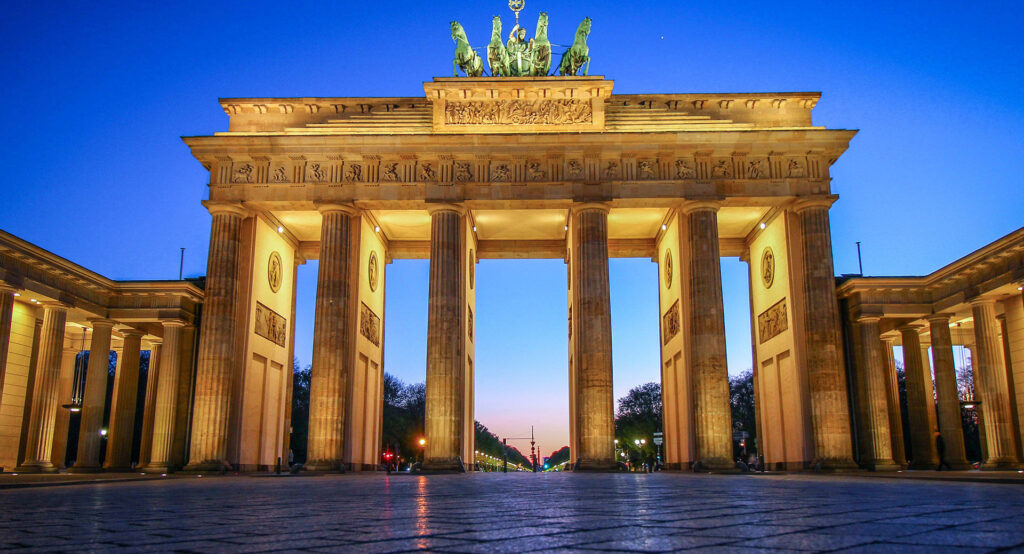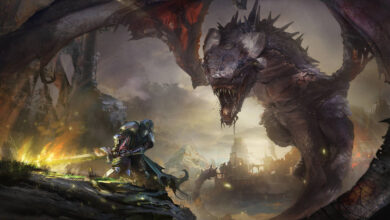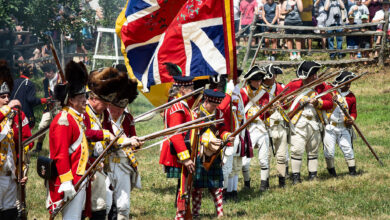The Cold War 15 Surprising Facts You Need to Know
The Cold War was a period of intense geopolitical tension between the United States and the Soviet Union that lasted for almost five decades.
It was a time of fear, paranoia, and uncertainty, as both superpowers engaged in a global struggle for dominance.
But beyond the headlines and the political manoeuvring, there are many fascinating facts about the Cold War that are not widely known.
In this blog post, we’ll explore 15 of them, from secret CIA operations to covert spy missions and more.
Get ready to be captivated by the hidden history of the Cold War, as we take a journey through some of its most surprising moments.
The Cold War was a political and military tension between the Western powers, led by the United States, and the Eastern powers, led by the Soviet Union.
1 It was characterized by a state of hostility and competition, as each side sought to gain an advantage over the other in areas such as nuclear arms, technology, and ideology. Despite the absence of direct military conflict between the two sides, the Cold War had a profound impact on global politics and the international order, shaping the course of world history for decades to come.
The end of World War II marked the beginning of a new era of international relations, as the United States and the Soviet Union emerged as the two dominant superpowers in the world.
2 Despite their shared victory in the war against Nazi Germany, the US and the Soviet Union had vastly different political ideologies and economic systems. While the US promoted democracy, free markets, and individual freedom, the Soviet Union advocated for communism, central planning, and collective ownership.
These fundamental differences in ideology set the stage for a global struggle for influence and power, which ultimately led to the Cold War.
The term “Cold War” was first used by the American financier and presidential adviser Bernard Baruch in a speech he gave on April 16, 1947.
3 In his speech, Baruch referred to the ongoing tensions between the United States and the Soviet Union as a “Cold War”, stating that “we are in the midst of a cold war which may be drawn out indefinitely”.
The term quickly gained widespread use in the media and political discourse to describe the growing rivalry and hostility between the two superpowers. While George Orwell did use the term “Cold War” in an article he wrote in 1945, it was Bernard Baruch who is credited with coining the term in its modern usage.
One of the defining features of the Cold War was the prevalence of proxy wars, which were fought between the United States and Soviet Union, or their respective allies, in various parts of the world.
4 These conflicts were called “proxy wars” because they were fought indirectly, with each side providing military and logistical support to their allies, rather than engaging in direct military confrontation with each other.
Two of the most significant proxy wars during the Cold War were the Korean War (1950-1953), which was fought between North and South Korea with support from the US and China, respectively, and the Vietnam War (1955-1975), which pitted North Vietnam and their communist allies against South Vietnam and the US.
The Cold War had a significant cultural dimension that extended beyond traditional military or political conflict.
5 The US and Soviet Union both recognized the importance of culture as a tool for influencing public opinion and shaping global perceptions. This led to a variety of cultural exchanges, such as art exhibits, film festivals, and sports competitions, as each side sought to promote their respective values and ideals.
The US, for example, promoted jazz music and Hollywood movies as symbols of American freedom and democracy, while the Soviet Union championed socialist realism and Soviet-produced films that emphasized collectivism and social justice. The cultural dimension of the Cold War reflected the broader ideological struggle between the two superpowers, as each sought to win hearts and minds around the world.
The term “Iron Curtain” was first used by the British Prime Minister Winston Churchill in a speech he gave on March 5, 1946.
6 At Westminster College in Fulton, Missouri. In this speech, Churchill referred to the “iron curtain” that had descended across Europe, dividing the communist countries of Eastern Europe from the non-communist countries of Western Europe.
The term became widely used to describe the ideological, political, and physical division between the Soviet Union and its allies in Eastern Europe and the United States and its allies in Western Europe during the Cold War.
The US and Soviet Union engaged in a space race during the Cold War, with both countries seeking to be the first to achieve major milestones in space exploration.
7 The space race began in 1957 when the Soviet Union launched the first artificial satellite, Sputnik 1, into orbit. This event shocked the United States and sparked a renewed focus on space exploration and the development of space technology.
In response to the Soviet Union’s early successes in space, the United States established the National Aeronautics and Space Administration (NASA) in 1958 and began a series of space programs aimed at surpassing the Soviet Union in space exploration. These efforts included Project Mercury, which sent the first American into space in 1961, and the Apollo program, which culminated in the first human landing on the Moon in 1969.
Throughout the 1960s, the United States and the Soviet Union competed to achieve a series of firsts in space exploration, such as the first spacewalk, the first spacecraft to orbit another planet, and the first space station. While the Soviet Union had some early successes, the United States ultimately surpassed the Soviet Union in space exploration, and the space race came to an end with the joint Apollo-Soyuz Test Project in 1975, which marked the first international manned space flight.
The Cold War had a significant impact on the development of the internet, particularly in the United States.
8 During the Cold War, the United States government was concerned about the vulnerability of its communication infrastructure to attack by the Soviet Union. As a result, the government funded research into alternative communication networks that would be more resilient in the event of an attack. This research led to the development of packet-switching technology, which is the foundation of modern computer networking and the internet.
In the 1960s, the U.S. Department of Defense’s Advanced Research Projects Agency (ARPA) created a network of computers called the ARPANET, which was designed to allow researchers and government officials to communicate and share information even in the event of a nuclear attack. The ARPANET was the precursor to the modern internet, and its development helped to lay the foundation for the internet’s growth and widespread use.
The development of the internet was also shaped by the Cold War’s geopolitical dynamics. The collapse of the Soviet Union in the early 1990s, and the resulting thaw in relations between the United States and Russia, helped to pave the way for the expansion of the internet into countries that had previously been isolated from global communication networks. Today, the internet is a truly global phenomenon, connecting people and information across borders and cultures in ways that would have been impossible without the technological innovations that emerged during the Cold War.
The Cold War was a period of political and military tension between the United States and the Soviet Union, which lasted from the end of World War II in 1945 until the collapse of the Soviet Union in 1991.
9 The conflict between the two superpowers had a significant impact on domestic politics in both countries.
In the United States, the Cold War fueled a wave of anti-communist sentiment, known as the “Red Scare.” This led to a crackdown on communist and left-wing groups, as well as a period of intense government surveillance and investigation of suspected subversives. The fear of communism also led to a growth of military spending and the development of a nuclear arms race, which had significant economic and political consequences.
In the Soviet Union, the Cold War had a major impact on domestic politics as well. The Soviet government used the conflict as a way to promote its own ideology and strengthen its grip on power. This included suppressing dissent and political opposition, as well as expanding the country’s military and industrial capacity to compete with the United States.
Overall, the Cold War had a profound impact on both the United States and the Soviet Union, shaping domestic politics and international relations for decades to come.
The Cuban Missile Crisis was a 13-day political and military standoff between the United States and the Soviet Union in October 1962.
10 It began when American U-2 spy planes photographed Soviet missile sites being built in Cuba, which is just 90 miles off the coast of Florida.
The US government considered the presence of Soviet missiles in Cuba to be a direct threat to national security, as it significantly reduced the amount of time the US would have to respond to a Soviet nuclear attack. President John F. Kennedy responded by imposing a naval blockade around Cuba to prevent further Soviet shipments of missiles from reaching the island.
The situation quickly escalated, with both sides preparing for a possible military conflict. The world held its breath as the US and the Soviet Union engaged in intense negotiations, with the potential for a catastrophic nuclear war looming in the background.
Fortunately, a peaceful resolution was reached when the Soviet Union agreed to remove the missiles from Cuba in exchange for a US pledge not to invade Cuba and the removal of US missiles from Turkey. The crisis was averted, but it served as a stark reminder of the potential consequences of the Cold War and the need for continued diplomacy and communication between the US and the Soviet Union.
The Cold War led to a significant increase in military spending and a global arms race between the United States and the Soviet Union.
11 The two superpowers were locked in a competition to build more advanced nuclear weapons, missile defense systems, and other military technologies.
This arms race was fueled by the belief on both sides that possessing a larger and more powerful military was essential for national security and would provide an advantage in the event of a conflict. The US and the Soviet Union developed increasingly sophisticated weapons and delivery systems, including intercontinental ballistic missiles (ICBMs) and multiple independently targetable reentry vehicles (MIRVs).
The arms race had far-reaching consequences, including a destabilization of global security and a massive diversion of resources away from other areas such as education, healthcare, and infrastructure. Both the US and the Soviet Union spent billions of dollars on weapons and military technology, money that could have been used for other social and economic purposes.
The arms race continued throughout the Cold War and had a profound impact on global politics and international relations. The threat of nuclear war was always present, and both sides were forced to maintain a delicate balance of power to avoid a catastrophic conflict.
The fall of the Berlin Wall in November 1989 was a pivotal moment in the end of the Cold War.
12 The Berlin Wall was a symbol of the division between East and West, and its collapse signaled the beginning of the end of Soviet dominance in Eastern Europe.
The events leading up to the fall of the Berlin Wall began in Hungary in the summer of 1989, when the Hungarian government dismantled its section of the Iron Curtain and allowed East Germans to travel to West Germany through Hungary. This move led to a wave of protests in East Germany, and on November 9, 1989, the East German government announced that citizens would be allowed to travel to the West. Thousands of East Germans flooded through the checkpoints and the wall was soon breached, leading to a spontaneous celebration and reunification of families and friends who had been separated for decades.
The fall of the Berlin Wall marked the beginning of a process of political and economic change in Eastern Europe, as the communist governments in the region began to collapse and democratic movements gained momentum. This process eventually led to the reunification of Germany in 1990 and the end of the Cold War.
The fall of the Berlin Wall was a significant moment in world history and a symbol of the power of popular movements to bring about change. It signalled the end of the Soviet Union’s dominance in Eastern Europe and the beginning of a new era of political and economic integration in Europe.
The end of the Cold War played a significant role in the collapse of the Soviet Union in 1991.
13 The Soviet economy was struggling to keep up with the economic changes that were happening around the world, and the cost of maintaining a global military presence was taking a toll on the country’s resources.
In the 1980s, Soviet leader Mikhail Gorbachev initiated a series of reforms, including glasnost (openness) and perestroika (restructuring), aimed at revitalizing the Soviet economy and political system. However, these reforms were not enough to prevent the collapse of the Soviet Union.
In August 1991, a group of hardline Communist Party members attempted to seize power from Gorbachev, leading to a coup attempt that ultimately failed. The events of the coup weakened Gorbachev’s position and paved the way for the collapse of the Soviet Union later that year.
On December 25, 1991, Gorbachev resigned as president of the Soviet Union, and the country was officially dissolved. The Soviet Union’s collapse marked the end of an era in world history and had profound implications for global politics and international relations. It led to a significant realignment of power in the world and paved the way for new political and economic systems to emerge in the former Soviet bloc countries.
The Cold War had a profound impact on international relations and the global balance of power, as it shaped the world order for decades.
14 It was a period of intense political, economic, and military competition between the United States and the Soviet Union, which played out on a global scale.
During the Cold War, the world was divided into two opposing blocs, with the United States leading the Western capitalist democracies and the Soviet Union leading the communist bloc. This division had a significant impact on global politics and international relations. It led to the formation of military alliances, such as NATO and the Warsaw Pact, and to numerous proxy wars and conflicts in various parts of the world, including Korea, Vietnam, and Afghanistan.
The Cold War also had a profound impact on the global economy. The United States and the Soviet Union were both major economic powers, and the competition between them led to a significant increase in military spending and a global arms race. This diversion of resources away from other areas, such as education and infrastructure, had a lasting impact on the global economy and contributed to the development of economic inequality between the developed and developing countries.
The end of the Cold War marked a significant shift in the global balance of power, with the United States emerging as the sole superpower. This led to a period of political and economic dominance by the United States, and the spread of democratic and capitalist values around the world. However, it also led to new challenges, such as terrorism and the rise of new economic powers like China, which continue to shape the world order today.
Today, the legacy of the Cold War can still be felt in many parts of the world, as tensions between the US and Russia continue to simmer and the threat of nuclear war remains a major concern.
15 The Cold War was a period of intense political and military tension between the United States and the Soviet Union that lasted from the end of World War II in 1945 until the collapse of the Soviet Union in 1991. The two superpowers were engaged in a global struggle for power and influence, with each side seeking to expand its sphere of influence and undermine the other’s.
The legacy of the Cold War is still evident in many parts of the world today, particularly in regions where the US and Russia continue to have strategic interests. For example, in the Middle East, the ongoing conflict in Syria is fuelled in part by the proxy war between the US and Russia. In Europe, tensions have risen in recent years as Russia has become more assertive in its foreign policy, leading to the annexation of Crimea and the ongoing conflict in eastern Ukraine.
The threat of nuclear war, which was a constant concern during the Cold War, continues to be a major concern today. Both the US and Russia maintain large stockpiles of nuclear weapons, and tensions between the two countries have led to fears that a nuclear war could break out. The risk of accidental nuclear war or miscalculation by either side is also a concern.
Overall, while the Cold War officially ended over 30 years ago, its legacy continues to shape global politics and international relations in many ways.





hi!,I like your writing so much! share we communicate more about your article on AOL? I need an expert on this area to solve my problem. Maybe that’s you! Looking forward to see you.